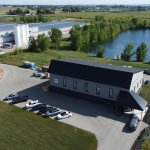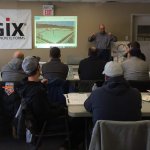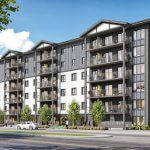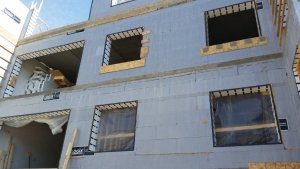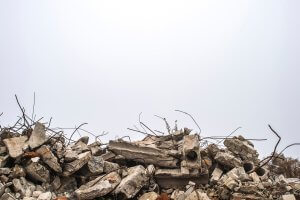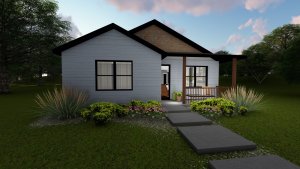According to this United States Geological Survey (USGS) map below, the number of large wildfires—classified as 300 acres or bigger—was the highest in the USA West from 1994 to 2013.
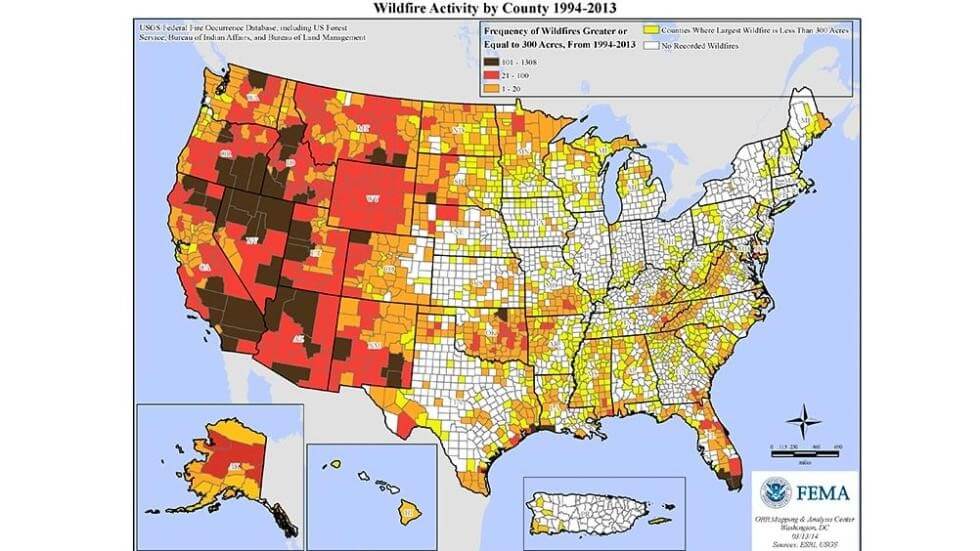
What Causes Wildfires?
Though official causes for the current wildfires have not been released, history has shown that sparks from lines are a huge factor in igniting wildfires. For instance, according to Cal Fire statistics, seven of the top 20 most destructive California wildfires were caused by power lines or arson.
According to Keeley, a Research Ecologist with the USGS, “Humans are the only source of fires during Santa Ana winds, you don’t get lightning during Santa Ana wind conditions. Humans are responsible for all the fires, either directly or through the power lines”.
Keeley said his research has found that there are additional causes of wildfires, including burning debris, smoking, campers leaving a fire unattended, kids playing with matches, outdoor equipment and vehicles, to name a few.
Wildfires in California
In 2017, fires in Santa Rosa, California, ravaged more than 245,000 acres, destroyed nearly 7,000 structures and killed 42 people, resulting in it being one of the worst fires in California history.
The recent Pawnee Fire that began burning in June in Northern California’s Lake County consumed over 15,000 acres and destroyed 22 buildings.
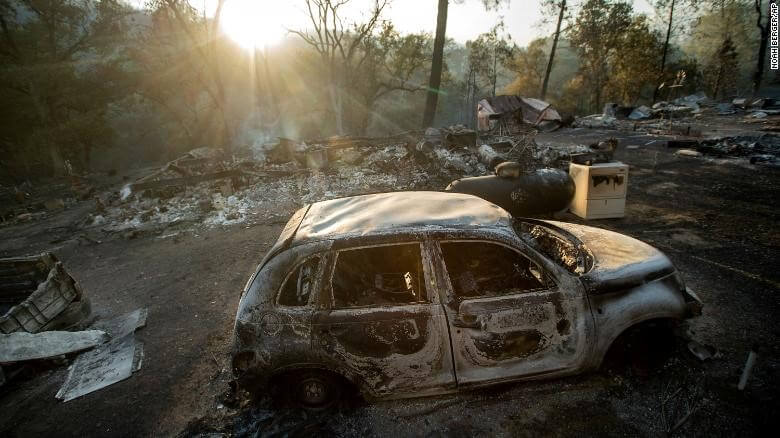
Thankfully there were no reports of casualties according to CNN. Mandatory evacuation orders were issued for some communities and about 1,500 people were forced from their homes.
Now 100% contained, more than 1,400 firefighters battled the Pawnee blaze, assisted by more than 20 engines, two helicopters and air tankers.
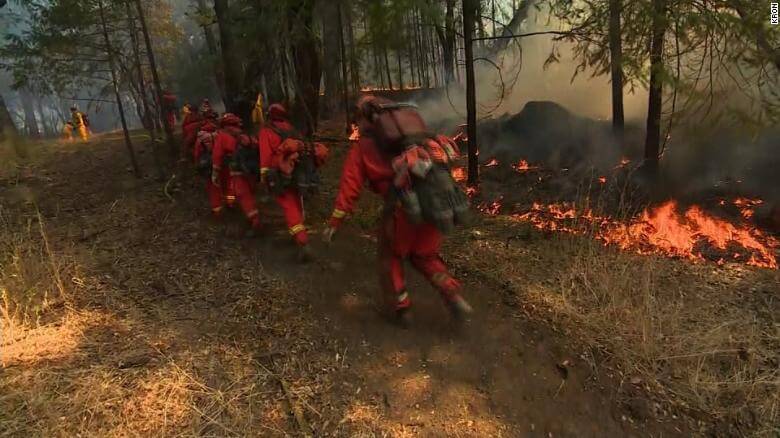
Devastation from the Pawnee Fire
Flames were first reported in the early evening of June 23, driven by “low relative humidity, erratic winds and above normal temperatures,” according to Cal Fire. The cause of the fire is under investigation. The location of the fires was Lake County, Pawnee Road and New Long Valley Road, located northeast of Clearlake Oaks, California.

A mandatory evacuation order was put into place for the communities of Spring Valley, which has a population of 845 people.
There are also other wildfires currently raging in California.
Known as the Lane Fire, located in Tehama County, this wildfire, now 100% contained, destroyed over 3,700 acres. The fire did threaten 200 buildings, and due to the steep terrain and hot weather, firefighters had difficulty getting the blaze out.
Another wildfire ripping through Tehama County, known as the Stroll Fire, has taken out 268 acres. Residents of Baker, Paskenta, Wilder and Stoll Roads were evacuated after the fire started, but some evacuees are already returning to their homes.
The Creek Fire is also ravaging through parts of Shasta County, Clear Creek Road and American Road, west of Redding, California. Almost 1,700 acres have burnt up, and thankfully, it is now 100% contained. Crews from the Sacramento, West Sacramento and Sutter County Fire Districts were on scene to support.
Bascom Fire in Millville was contained, but wiped out 328 acres. The community of Moccasin had a fire spread of 163 acres and was also contained with no structures being threatened. The Shippee Fire located southeast of Durham affected 47 acres. The fire was contained and no buildings were damaged. Horse Fire located near Copperopolis, California, was 100% contained after 80 acres were affected by fire.
Here is a map of the wildfires being fought as this time:
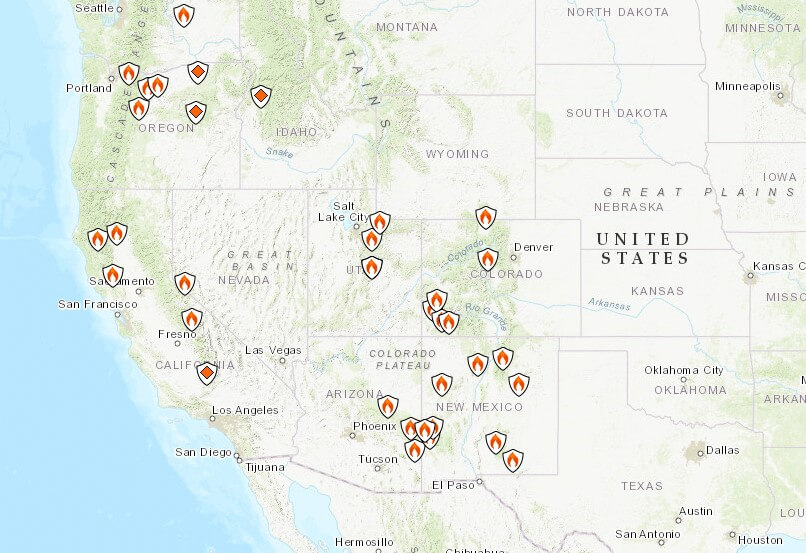
The Impact and Damage Caused by Wildfires
Fire kills more in the United States than any other natural disaster, according to the U.S. Fire Administration. In the last decade, more than 3,700 people have lost their lives and another 20,000 injured. Property loss due to fires in 2006 was estimated at $11.3 billion.
In fact, in most areas of the United States, the greatest threat to homes and commercial structures is not hurricanes and tornadoes, but wildfire!
Surviving Wildfires with Homes Built with Insulated Concrete Forms (ICFs)
This home located in Rancho Bernardo, California, survived a firestorm near San Diego thanks to its fireproof walls built with ICFs. Two thousand other homes in the area were destroyed.
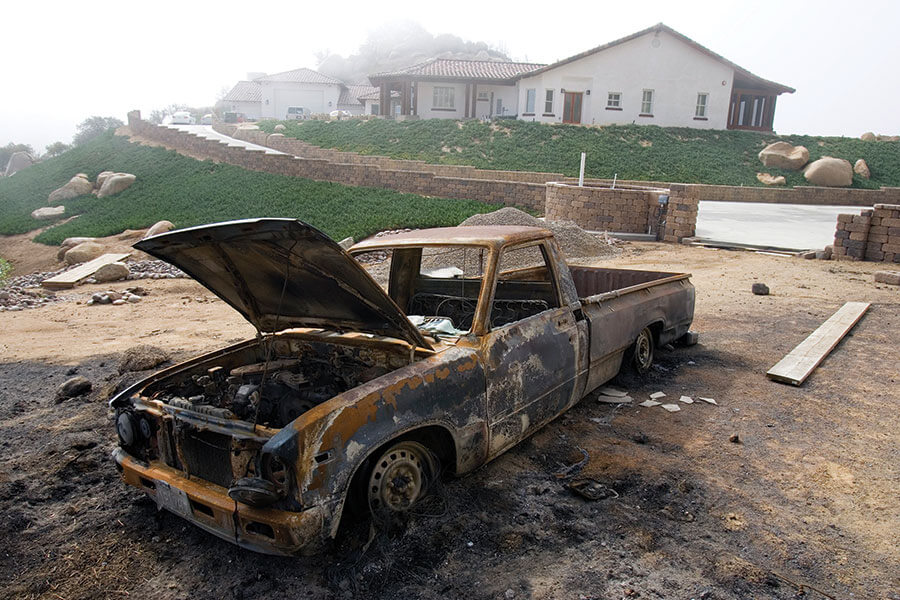
And this home was hit last year with wildfire. The intense heat melted the vinyl window, but otherwise, it was not affected in any way. The home, located outside Escondido, California, was also constructed with insulated concrete form walls.
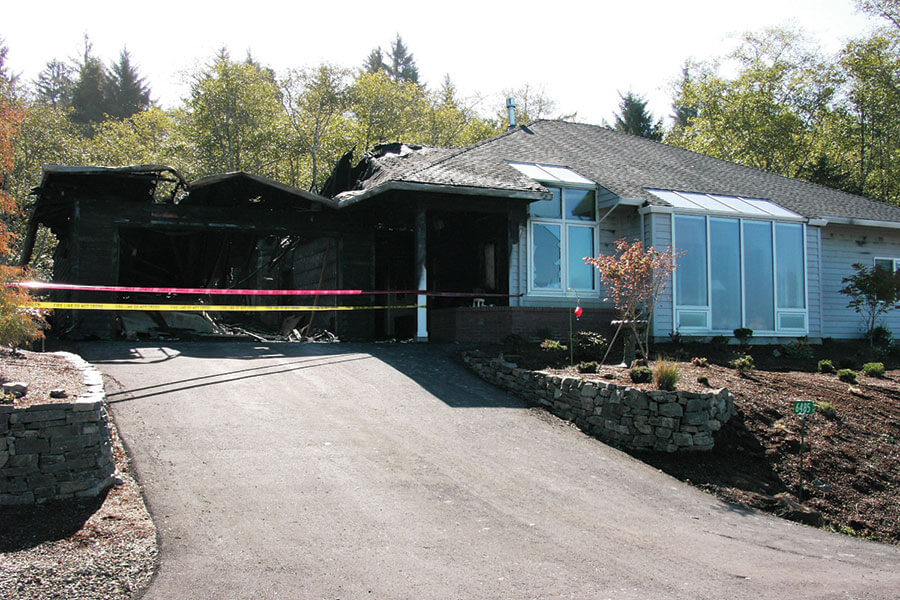
This San Diego wildfire below devastated many homes. There are three still intact, and they are all homes built with ICFs!
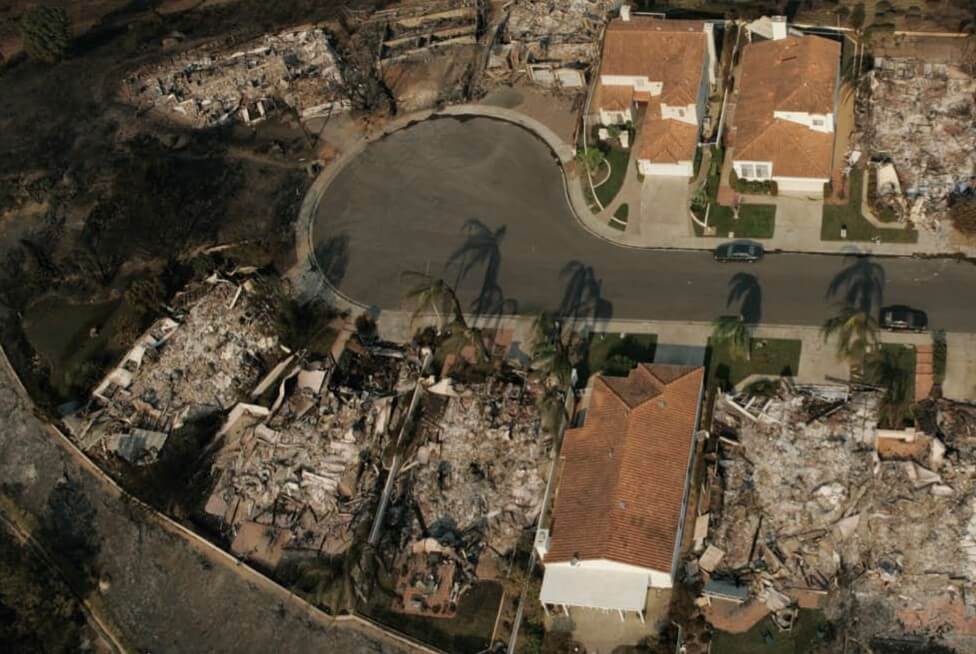
What Are Insulated Concrete Forms?
An insulated concrete form (ICF) block looks like this:
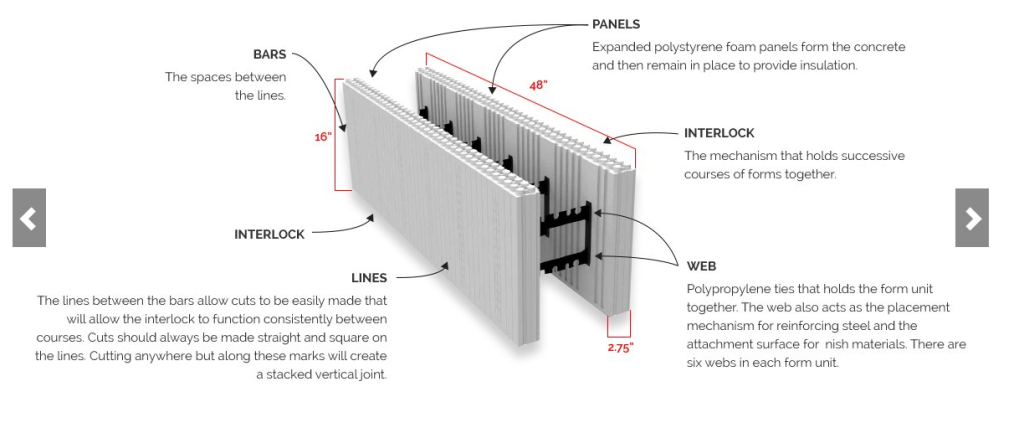
ICF blocks are stacked together to form the exterior walls of the home, and then concrete is poured into the hollow core to create a highly insulated and wildfire-resistant, concrete-and-steel wall assembly:
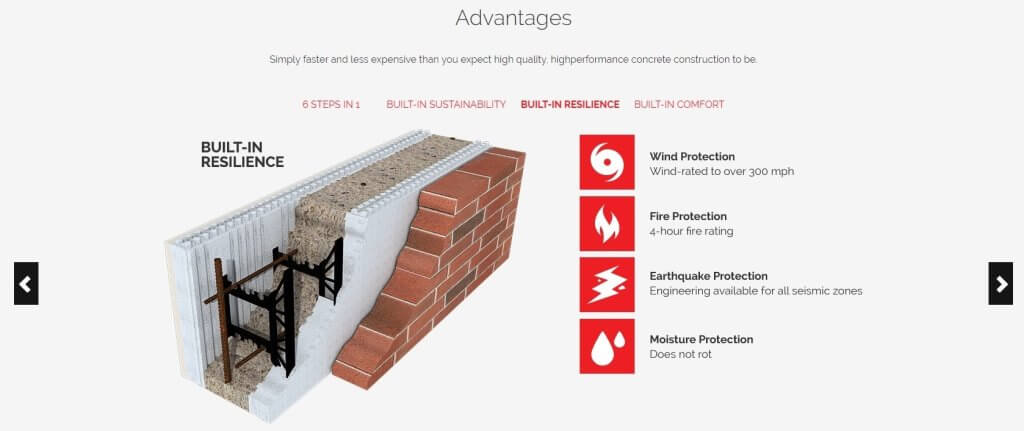
To learn more about ICFs, click here.
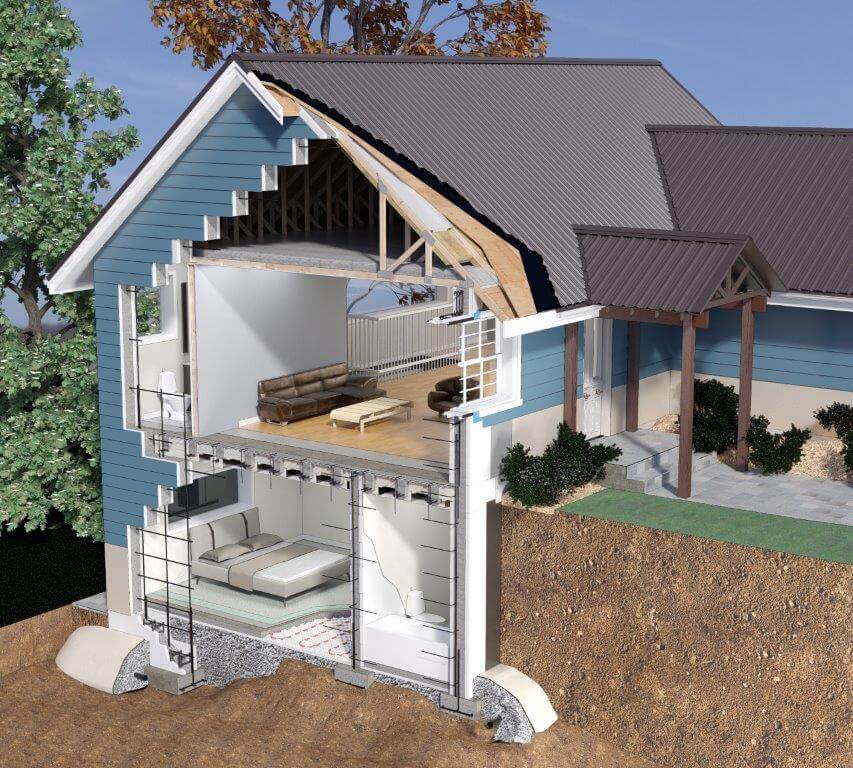
This is what a wildfire-resistant home built with ICFs looks like:
Strong and safe ICF homes are not expensive, but when wildfires threaten, they’re priceless.
First, the highly insulated, concrete-and-steel Logix ICF building envelope will protect as well as provide comfort and peace of mind to your family during the threatening event itself.
Then, in the days and weeks afterward, while your community’s utilities and infrastructure are being repaired and you have no air conditioning or heating due to a power outage, the air-tight and highly insulated ICF envelope will continue to surround your family in an ambiance of relative comfort, with moderate temperatures and humidity levels.
Here are the four most important wildfire-resistant features of an ICF home:
ICF Walls Have a 4-Hour Fire Rating
Concrete and steel ICF walls have a 4-hour fire rating as opposed to 15 minutes for a comparable wood-framed wall. ICF walls have been tested up to 2000° Fahrenheit for up to four hours in fire conditions. Wood-framed walls usually collapsed within 60 minutes, but the ICF wall did not experience any structural damage.
Wood does burn, however, concrete does not. Concrete does not bend when it gets hot, like steel would. Concrete will withstand heat of several thousand degrees, which is not uncommon in a typical house fire. While the contents of a home are still flammable, concrete itself is not. You have no chance of an electrical fire being concealed inside a concrete wall.
Concrete walls prevent fire from spreading into the interior of the building. The concrete walls block enough heat from passing through the walls to start a fire on the interior for up to four hours. Wood-framed walls allow enough flame and heat to pass through to start a fire inside within just an hour.
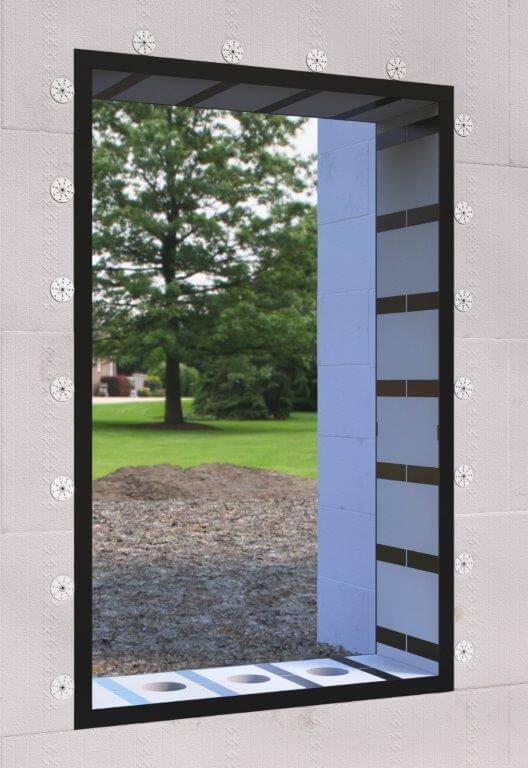
ICF Window and Door Bucks Add Even More Wildfire Resistance
An ICF system with a foam buck offers insulation around the opening and offers a barrier against air and moisture puncture. It will provide a constant concrete barrier around the opening for utmost strength.
Steel and Concrete ICF Floors Provide Protection Between Floors
ICF floors also offer protection from fire and prevent a fire from spreading from one floor to another.
Metal Roofs Make a Great Fire-Resistant “Lid”
A steel/metal roof is extremely fire-resistant and is a perfect “lid” for a wildfire-resistant ICF home. It insulates against sparks, preventing a fire from spreading to your home. Not only can a steel roof help save you more money by keeping your heating and cooling costs low, but it is also great for the environment.
Steel roofs are also energy-efficient. In the summer months, they deflect sunlight from being absorbed, and in the winter, they act as an insulator, reflecting and circulating the air from inside the building.
ICFs Also Build Great Safe Rooms Within A Home
According to the Federal Emergency Management Agency (FEMA), a safe room is typically a room within a home made out of concrete and steel, and it must meet FEMA criteria. Safe rooms provide a place of protection against severe weather, including wildfires.
A safe room is created by building any room with ICF walls, pouring a “concrete lid” on top, and installing a steel door. A safe room is fire-resistant and is a great place to store your valuables. Adding a safe room into your home build or existing home is both affordable and straightforward.
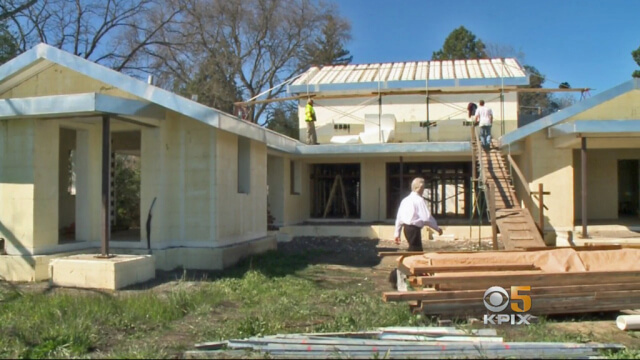
Here is a recent news clip showing a California homeowner building his new wildfire-resistant home with ICFs after last year’s wine country wildfire destroyed his home in Tubbs, California:
Learn More/Next Steps
Insulated Concrete Forms are the perfect start toward building a cost-effective and highly wildfire-resilient home or building.
View/download this infographic to learn how you can further optimize the power of Logix ICF to provide maximum protection, peace of mind and comfort from wildfires.
Click here to learn all about ICFs and disaster-resilience.

